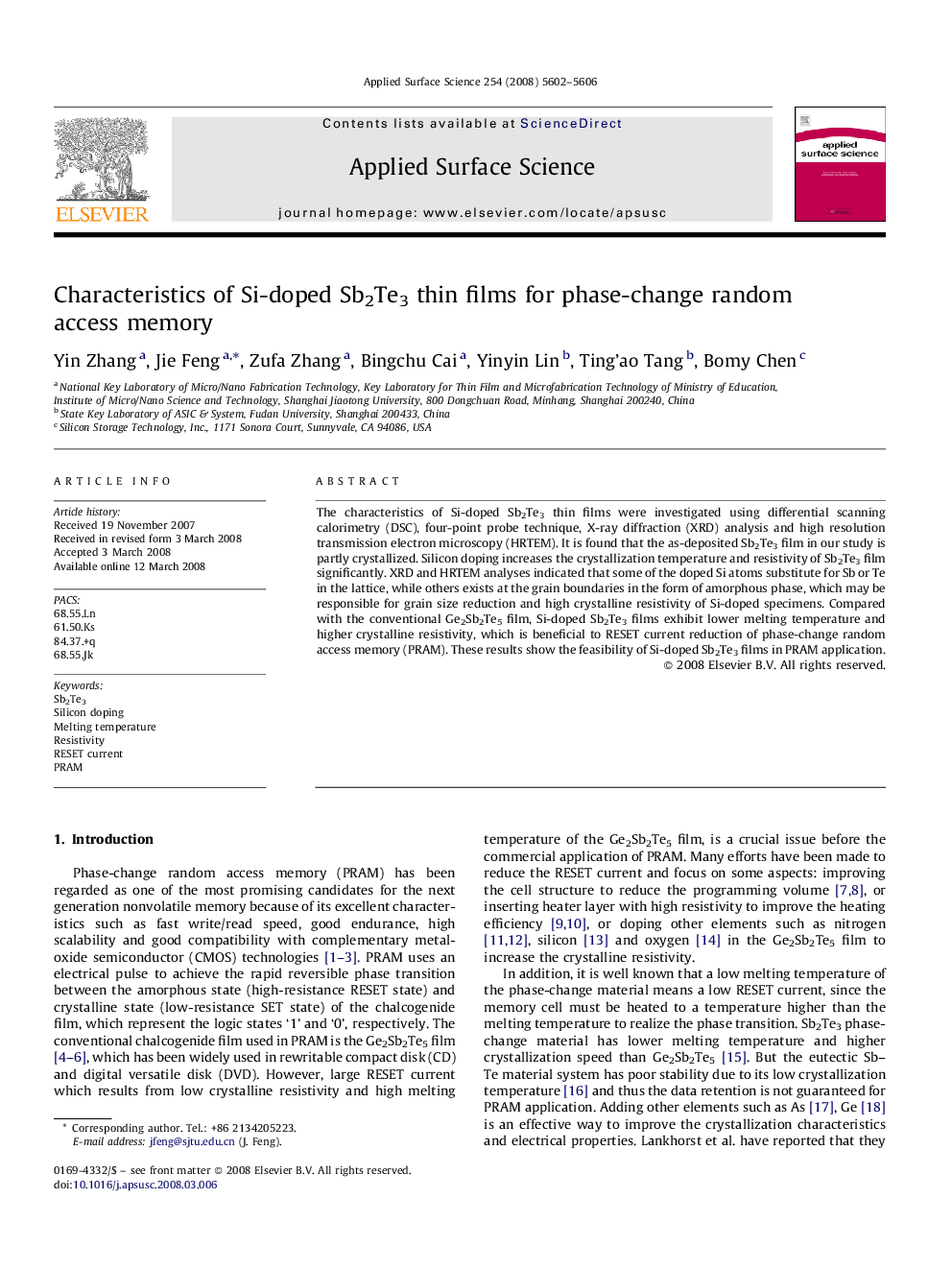| Article ID | Journal | Published Year | Pages | File Type |
|---|---|---|---|---|
| 5369469 | Applied Surface Science | 2008 | 5 Pages |
The characteristics of Si-doped Sb2Te3 thin films were investigated using differential scanning calorimetry (DSC), four-point probe technique, X-ray diffraction (XRD) analysis and high resolution transmission electron microscopy (HRTEM). It is found that the as-deposited Sb2Te3 film in our study is partly crystallized. Silicon doping increases the crystallization temperature and resistivity of Sb2Te3 film significantly. XRD and HRTEM analyses indicated that some of the doped Si atoms substitute for Sb or Te in the lattice, while others exists at the grain boundaries in the form of amorphous phase, which may be responsible for grain size reduction and high crystalline resistivity of Si-doped specimens. Compared with the conventional Ge2Sb2Te5 film, Si-doped Sb2Te3 films exhibit lower melting temperature and higher crystalline resistivity, which is beneficial to RESET current reduction of phase-change random access memory (PRAM). These results show the feasibility of Si-doped Sb2Te3 films in PRAM application.
